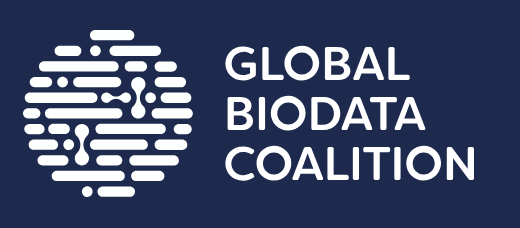The name of this superfamily has been modified since the most recent official CATH+ release (v4_4_0). At the point of the last release, this superfamily was named:
"Ribonuclease Inhibitor
".
FunFam 795: Antagonist of mitotic exit network
Please note: GO annotations are assigned to the full protein sequence rather than individual protein domains. Since a given protein can contain multiple domains, it is possible that some of the annotations below come from additional domains that occur in the same protein, but have been classified elsewhere in CATH.
There are 2 GO terms relating to "molecular function"
The search results have been sorted with the annotations that are found most frequently at the top of the
list. The results can be filtered by typing text into the search box at the top of the table.
| GO Term | Annotations | Evidence |
|---|---|---|
|
Protein binding GO:0005515
Interacting selectively and non-covalently with any protein or protein complex (a complex of two or more proteins that may include other nonprotein molecules).
|
2 | P38285 (/IPI) P38285 (/IPI) |
|
Small GTPase binding GO:0031267
Interacting selectively and non-covalently with a small monomeric GTPase.
|
2 | P38285 (/IPI) P38285 (/IPI) |
There are 7 GO terms relating to "biological process"
The search results have been sorted with the annotations that are found most frequently at the top of the
list. The results can be filtered by typing text into the search box at the top of the table.
| GO Term | Annotations | Evidence |
|---|---|---|
|
Negative regulation of exit from mitosis GO:0001100
Any process involved in the inhibition of progression from anaphase/telophase (high mitotic CDK activity) to G1 (low mitotic CDK activity).
|
2 | P38285 (/IGI) P38285 (/IGI) |
|
Negative regulation of exit from mitosis GO:0001100
Any process involved in the inhibition of progression from anaphase/telophase (high mitotic CDK activity) to G1 (low mitotic CDK activity).
|
2 | P38285 (/IMP) P38285 (/IMP) |
|
Mitotic cell cycle checkpoint GO:0007093
A cell cycle checkpoint that ensures accurate chromosome replication and segregation by preventing progression through a mitotic cell cycle until conditions are suitable for the cell to proceed to the next stage.
|
2 | P38285 (/IMP) P38285 (/IMP) |
|
SCF-dependent proteasomal ubiquitin-dependent protein catabolic process GO:0031146
The chemical reactions and pathways resulting in the breakdown of a protein or peptide by hydrolysis of its peptide bonds, initiated by the covalent attachment of ubiquitin, with ubiquitin-protein ligation catalyzed by an SCF (Skp1/Cul1/F-box protein) complex, and mediated by the proteasome.
|
2 | P38285 (/IMP) P38285 (/IMP) |
|
Cellular protein complex disassembly GO:0043624
The disaggregation of a protein complex into its constituent components, occurring at the level of an individual cell. Protein complexes may have other associated non-protein prosthetic groups, such as nucleic acids, metal ions or carbohydrate groups.
|
2 | P38285 (/IMP) P38285 (/IMP) |
|
Negative regulation of septum digestion after cytokinesis GO:2001042
Any process that stops, prevents or reduces the frequency, rate or extent of the process of physically separating the septal cell wall material by enzymatic digestion, that occurs after daughter cells are separated by cytokinesis.
|
2 | P38285 (/IGI) P38285 (/IGI) |
|
Negative regulation of septum digestion after cytokinesis GO:2001042
Any process that stops, prevents or reduces the frequency, rate or extent of the process of physically separating the septal cell wall material by enzymatic digestion, that occurs after daughter cells are separated by cytokinesis.
|
2 | P38285 (/IMP) P38285 (/IMP) |
There are 3 GO terms relating to "cellular component"
The search results have been sorted with the annotations that are found most frequently at the top of the
list. The results can be filtered by typing text into the search box at the top of the table.
| GO Term | Annotations | Evidence |
|---|---|---|
|
Nucleus GO:0005634
A membrane-bounded organelle of eukaryotic cells in which chromosomes are housed and replicated. In most cells, the nucleus contains all of the cell's chromosomes except the organellar chromosomes, and is the site of RNA synthesis and processing. In some species, or in specialized cell types, RNA metabolism or DNA replication may be absent.
|
2 | P38285 (/IDA) P38285 (/IDA) |
|
Cytoplasm GO:0005737
All of the contents of a cell excluding the plasma membrane and nucleus, but including other subcellular structures.
|
2 | P38285 (/IDA) P38285 (/IDA) |
|
Cellular bud GO:0005933
A protuberance from a cell of an organism that reproduces by budding, which will grow larger and become a separate daughter cell after nuclear division, cytokinesis, and cell wall formation (when appropriate). The daughter cell may completely separate from the mother cell, or the mother and daughter cells may remain associated.
|
2 | P38285 (/IDA) P38285 (/IDA) |
